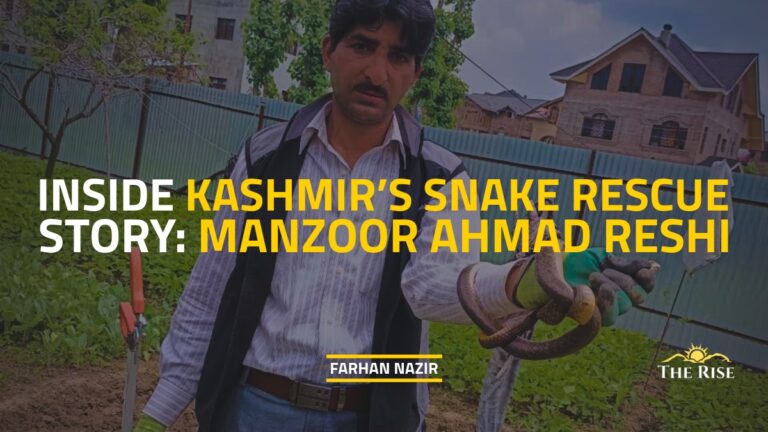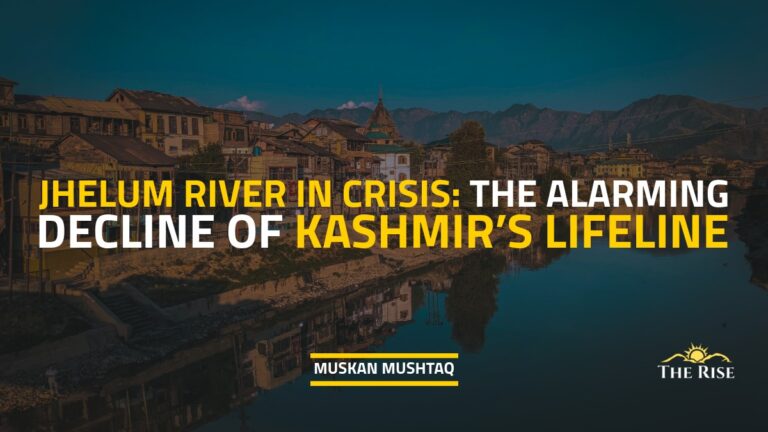The CAG audit and media reports found that hundreds of crores had been spent or marked as ‘completed,’ yet many embankment structures remained incomplete, poorly built, and offered little actual flood protection. Despite frequent claims by Bihar’s leaders that international rivers and inadequate central support are to blame, residents view this as a convenient deflection, as the persistent centre–state blame game has done little to change their annual reality of displacement and despair.
In August 2025, when the swollen Kosi spilt over its banks once again, northern Bihar witnessed the same scenes — flooded fields, broken embankments, and families on bamboo rafts, clinging to what was left of their homes. Government press releases soon followed, boasting of rapid “relief distribution” and “record progress” under the River Link project. Yet, on the ground, the cracks were visible, both in embankments and in administration.
The districts in North Bihar heighten flood vulnerability due to the high-risk belt, silt-laden river channels, and inadequate embankments, which cause water levels to rise above the danger mark. Despite large government budgets and multiple flood management initiatives, the devastation has worsened over the years with the destruction of crops, infrastructure and widespread mass displacement.
This article examines why flood-control projects continue to falter in Bihar, focusing on implementation gaps, weak embankment maintenance, and administrative inefficiencies. It also explores practical steps to strengthen the state’s flood management outcomes and ensure accountability on the ground.
Kosi-Mechi River Link and Embankment Schemes (2024-25)
The scheme is a part of India’s ambitious National Perspective Plan for interlinking rivers. The project involves linking the Kosi River with the Mechi River, a tributary of the Mahananda. It aims to reduce the impact of floods in northern Bihar and help farmers irrigate over two lakh hectares of agricultural land. The project’s estimated worth stands at ₹ 6,282.32 crore, with a central share of ₹ 3,652.56 crore.
However, field realities tell a different story. Many embankments remain weak and poorly maintained. While the Bihar government claimed to have disbursed 456 crore for 6.5 lakh flood-affected families, on the ground, the improvement remains minimal, and rehabilitation efforts are inadequate.
“The Government only spends money, but we don’t see any results,” said one of the locals, expressing his frustration. This highlights that the administrative records often fail to match the on-ground realities, leaving vulnerable communities exposed to floods year after year.
Official audits and independent investigations further confirmed this disconnect. The CAG audit and media reports found that hundreds of crores had been spent or marked as ‘completed,’ yet many embankment structures remained incomplete, poorly built, and offered little actual flood protection.
Causes and Consequences
The recurring floods in Bihar have deepened poverty, unemployment, and slowed the pace of development. Since the majority of Bihar’s families depend on agriculture, every flood season brings severe economic and emotional distress. Farmlands remain submerged for weeks, destroying crops and reducing harvests. Shops shut down, daily-wage workers lose income, and the rural economy grinds to a halt. Damaged roads, bridges, and public infrastructure make the recovery process slower, while poor families suffer the most due to delayed and insufficient relief.
Also Read: From Manusmriti to Bharatiya Nyaya Sanhita: What Ancient Laws Teach Us About Justice for Women
A survey conducted among 1,081 families in Supaul, Saharsa, Madhubani, and Darbhanga districts revealed a stark gap between policy and practice. The majority of families did not receive support, relief materials, or proper compensation after the floods. Only a few received official alerts, but many warnings came too late, leaving people with no time to evacuate or protect their belongings. Over the last two years alone, Bihar has reported around 118 deaths linked to recurrent flooding, figures that reflect both natural vulnerability and human neglect.
The core causes behind Bihar’s weak flood management lie in the delays in fund disbursement, bureaucratic inefficiencies, and a lack of transparency. While Bihar’s leaders frequently cite international rivers and the lack of the centre’s support to manage floods in Bihar as the root cause, residents see this as a convenient deflection. For them, the persistent centre–state blame game has done little to change their annual reality of displacement and despair.
Recommendations
Bihar’s chronic hydrological disruptions continue to hinder its development. Planning should prioritize flood resilience over post-disaster responses by building strong embankments, efficient drainage systems, and clearly designated flood zones. Greater transparency in the use of contingency funds can make relief measures more effective. Bihar’s flagship SHG program, JEEViKA, deserves a stronger institutional support to enable community evacuations, efficient distribution of food and health kits, and ensure coordinated and effective disaster management.
To strengthen disaster response, Bihar needs to enhance its rescue operations through better training for teams, increased availability of relief boats, and well-structured evacuation plans. Flood alerts should be issued promptly and disseminated widely, supported by adequately equipped relief camps and community kitchens that provide safe shelter and nutritious food to affected families. Compensation and aid must be holistic, extending beyond cash transfers to include housing repair, crop restoration, and livestock assistance. Relief funds should be digitally monitored and subject to independent third-party audits to ensure full transparency and accountability for every rupee spent.
The focus must shift to disaster preparedness, as proactive measures can significantly reduce both human and economic losses. With consistent reforms and transparent governance, Bihar can move from reactive flood management to a model of resilience that safeguards its people and economy.
Kritesh Bhagat is a TRIP intern under Hamra Bihar
Mentored and Edited by Sneha Yadav
References
- Vivek Mishra. (2025, March 27). Kosi floodplains: Survey reveals glaring issues in Bihar’s flood management, 62% respondents neglected by relief measures. Down to Earth. https://www.downtoearth.org.in/natural-disasters/kosi-floodplains-survey-reveals-glaring-issues-in-bihars-flood-management-62-respondents-neglected-by-relief-measures
- Amrita, B. S. |., & Amrita, B. S. &. (2025, April 7). ₹562 CR plan approved to tackle floods in Bihar. Bihar Say. https://biharsay.com/2025/04/07/%E2%82%B9562-cr-plan-approved-to-tackle-floods-in-bihar/
- Kumar, A. & The Chitransh Academic & Research. (2025). Analyzing the impact of flooding on Bihar’s economy: Losses and recovery strategies. In The Chitransh Academic & Research (Vol. 1, Issue 2, pp. 90–93) [Journal-article]. https://thechitranshacadmic.in/wp-content/uploads/2025/04/paper-7.pdf
- Kulkarni, D., & Kulkarni, D. (2025, August 20). Bihar CM Nitish Kumar provides Rs 456 crore flood relief to 6.51 lakh families. Equitypandit. https://www.equitypandit.com/bihar-cm-nitish-kumar-provides-rs-456-crore-flood-relief-to-6-51-lakh-families/
- No name. (2025, January 8). Island villages between Kosi embankments neglected after Bihar floods, the weak most affected – Press. Press Institute. https://pressinstitute.in/grassroots/island-villages-between-kosi-embankments-neglected-after-bihar-floods-the-weak-most-affected/
- Sandrp, V. a. P. B. (2025, January 3). 2024: Do Embankments save from floods or worsen the disasters? SANDRP. https://sandrp.in/2025/01/03/2024-do-embankments-save-from-floods-or-worsen-the-disasters/
- Tandon, A. (2024, November 7). Island villages between Kosi embankments neglected after Bihar floods. Mongabay-India. https://india.mongabay.com/2024/11/island-villages-between-kosi-embankments-neglected-after-bihar-floods/
- Pti. (2025, August 20). Bihar CM transfers Rs 456 cr to bank accounts of flood-hit families. The Economic Times. https://economictimes.indiatimes.com/news/india/bihar-cm-transfers-rs-456-cr-to-bank-accounts-of-flood-hit-families/articleshow/123404600.cms
- Singh, N., PRS Legislative Research, & Institute for Policy Research Studies. (2025). Bihar Budget Analysis 2025-26.












